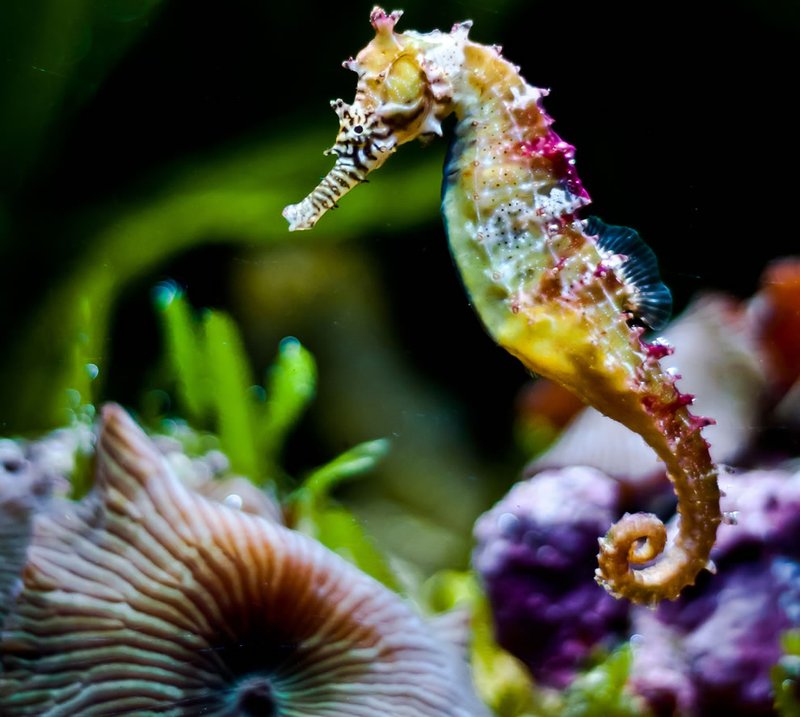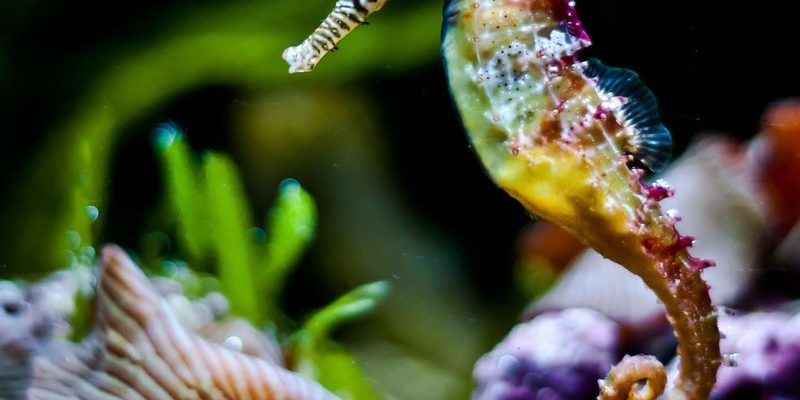
Let’s dive into this topic together. Seahorses are remarkable not just for their look but for their habitats. From the warm, shallow waters of tropical oceans to estuaries and even some rivers, seahorses have an interesting range of homes. Let me explain how they adapt to these environments and what makes each of them special.
The Ocean: Seahorses’ Primary Habitat
Most seahorses can be found in the oceans, particularly in shallow, coastal waters. You’ll typically spot them in areas with plenty of vegetation, like seagrass beds and coral reefs. These habitats provide both shelter and food for seahorses, who often use their long snouts to suck up tiny shrimp and plankton drifting by.
Honestly, the ocean is like a bustling city for seahorses. They thrive in warm waters ranging from tropical to temperate regions. Some popular locations for seahorse sightings include the Great Barrier Reef in Australia, the Caribbean Sea, and even the Mediterranean. It’s pretty amazing how these little fish can be found in such diverse places, each with its unique underwater community.
Here’s the thing: seahorses are not strong swimmers. They rely on their dorsal fins to propel themselves and often anchor onto plants or corals with their prehensile tails. This clever maneuver helps them avoid predators and stay safe while they munch on their food. When you think about it, seahorses have turned the ocean into their very own cozy home.
Estuaries: The Mixing of Fresh and Salt Water
You might be surprised to learn that seahorses can also be found in estuaries, where freshwater from rivers meets saltwater from the ocean. These areas create a rich environment for them, full of nutrients and food sources. Estuaries often have a mix of habitats, including mudflats and salt marshes, which provide ample hiding spots for these shy creatures.
Seahorses love to hang out in these brackish waters partly because they can find plenty of food. In estuaries, you’ll find an abundance of small shrimp and other tiny critters floating around, making it a buffet for our quirky fish friends. They often seek refuge in the dense vegetation found in these areas, which helps them dodge hungry predators.
There’s something special about estuarine environments. They serve as nurseries for many marine species, providing a safe space for young seahorses to grow up. It’s fascinating to think that seahorses, usually associated with the open ocean, can flourish in the ever-changing waters of estuaries.
Rivers: Unexpected Seahorse Homes
Believe it or not, there are some species of seahorses that even venture into rivers! While this isn’t common, certain freshwater habitats can support these unique fish. For instance, seahorses have been spotted in places like the Amazon River Basin. Here, they adapt to living in murky waters where vegetation can provide the cover they need to survive.
One of the most fascinating aspects of seahorses in rivers is their ability to adjust to changing salinity levels. Unlike their ocean-dwelling cousins, river seahorses may have to deal with fluctuating freshwater and saltwater levels. This adaptability is a testament to their resilience and remarkable biology.
However, living in rivers can be a bit tricky. River seahorses often face challenges like pollution and habitat destruction. Conservation efforts are crucial to ensuring they have a safe environment to thrive. It’s a reminder of how interconnected our ecosystems are and the importance of protecting these unique habitats.
Coastal Areas: A Perfect Blend of Habitats
Coastal regions are another heartwarming habitat for seahorses. These areas often provide a blend of ocean and estuarine environments, making them a perfect spot for these creatures to thrive. In coastal zones, seagrasses, mangroves, and coral reefs create a vibrant tapestry of life, and seahorses are right in the mix.
One reason seahorses are so comfortable in coastal areas is the abundance of food. Just like at your local diner, they have easy access to a variety of meals. The sheltered waters offer a safe place for seahorses to feed, reproduce, and grow. Plus, the rich biodiversity around them supports a healthy ecosystem where they can flourish.
When exploring coastal habitats, you might find seahorses curled around the seagrass blades or tucked away in coral crevices. Their camouflage makes them nearly invisible, which is a clever survival strategy. It’s like a game of hide and seek, where they play the role of the hidden player.
Conservation: Protecting Seahorse Habitats
With seahorses facing threats from habitat loss, pollution, and climate change, conservation efforts have become essential. Protecting their habitats is crucial for their survival. Organizations worldwide work tirelessly to preserve critical areas like coral reefs and estuaries, ensuring that these remarkable fish have safe spaces to call home.
You might be wondering how you can help! Simple actions like reducing plastic usage and supporting sustainable fishing practices can make a difference. By advocating for cleaner oceans and healthier marine environments, you contribute to the conservation of seahorses and their habitats.
It’s heartening to see communities coming together to protect these incredible creatures. By raising awareness and fostering a love for marine life, we can help ensure that future generations will also marvel at the beauty of seahorses in their natural environments.
Seahorses are truly remarkable little fish that live in a variety of habitats, from oceans and estuaries to even rivers. Their adaptability and unique homes highlight the incredible diversity of marine life. Whether you’re watching them drift among ocean currents or hiding in coastal grass beds, these enchanting creatures remind us of the fragile beauty of nature.
So next time you think about seahorses, remember the important role they play in our ecosystems and the need to protect their homes. Let’s celebrate and safeguard these tiny wonders of the sea, ensuring that they continue to inspire curiosity and wonder for generations to come.

